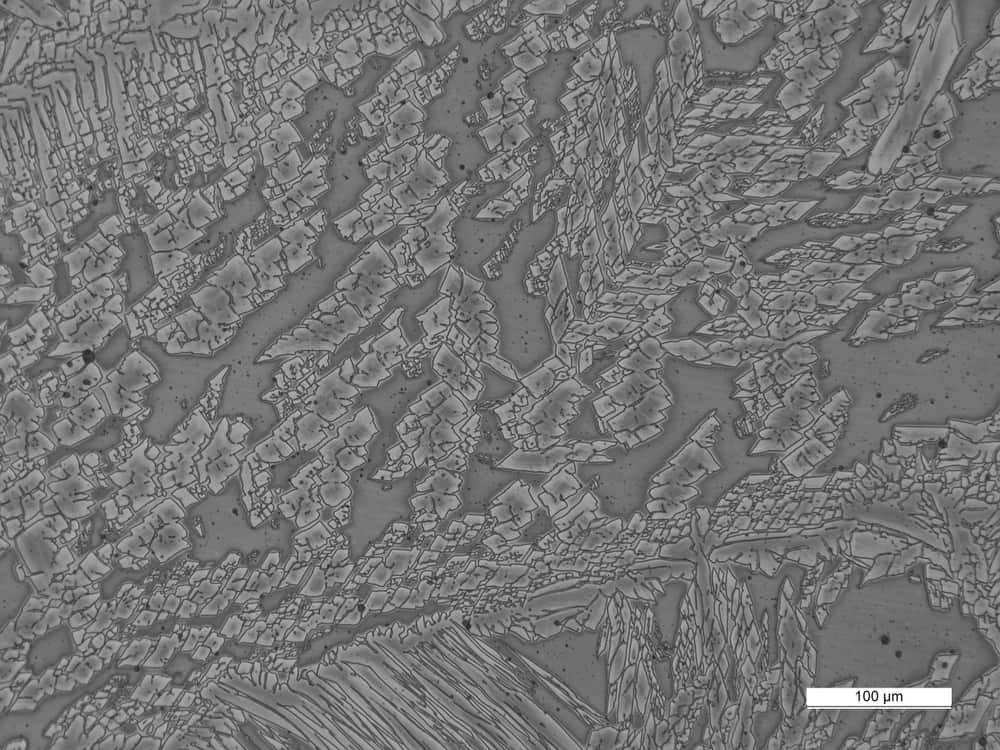
Duplex stainless steel is an alloy of steel with two-phase microstructures and an equal proportion of austenite and ferrite. These special materials capture the benefit of both austenitic and ferritic stainless steel grades and provide excellent strength, toughness, and corrosion resistance. And these properties have also made duplex stainless steel a highly sought-after metal in oil and gas, construction, and nuclear industries.
Welding duplex grade is not very different from welding stainless steel, as a regular TIG (Tungsten Inert Gas) or MIG (Metal Inert Gas) welding process can be applied. However, maintaining the correct austenite-ferrite ratio can be a challenge in the heat-affected zone. The control required to maintain duplex stainless steel welding quality is attainable with the help of an automated orbital welding process.
Duplex Stainless Steel Welding Concerns
Mechanical and corrosion-resistant properties in duplex stainless steel rely on the even split of austenite and ferrite molecular structures. However, heat exposure plays a significant role in preserving or disintegrating this structure. Different temperature ranges give rise to unique formations and can cause detrimental effects on metal properties during welding.
| Sigma phase | 700 -1000 ℃ | Chromium depletion in the heat-affected area causes a decrease in resistance to pitting corrosion. |
| Nitrides | 600 – 900 ℃ | Precipitation of nitrides in heat-affected areas reduces toughness and corrosion resistance. |
| Alpha-prime | 350 – 550 ℃ | Decreases toughness and increases vulnerability to hydrogen-induced stress corrosion cracking. |
Similarly, if the metal is overheated during welding, ferrite will form and cause a material composition imbalance. If rapidly cooled, ferrite cannot transform back into austenite. To address these complications, manufacturers must ensure duplex stainless steel is welded with great care.
- Interpass temperature should generally be limited to 150℃.
- Filler material should have at least 2 to 4% additional nickel to increase austenite content.
- Weld thickness should, in general, be moderate to avoid issues like voids or pores.
Maintaining these parameters is difficult when the welding is performed manually. Automated welding processes, however, facilitate weld parameter control. Operators can leverage this feature to improve duplex stainless steel welding quality.
Orbital Welding Improves Weld Quality with Control
TIG is a popular welding option for duplex stainless steel. And because it offers excellent shielding, atmospheric contents can be prevented from contaminating the weld. This feature, in addition to the automatic weld, can help ensure consistent duplex stainless steel welds. Automated systems such as the orbital welding process facilitate:
- Controlled heating and cooling to ensure weld temperature does not exceed optimal range and degrade material properties.
- Auto weld head, facilitating easy positioning, travel speed, and wire feed.
- Remote monitoring that allows technicians to easily optimize the weld parameters to ensure high-quality welds.
- Welding flexibility (achieved with orbital weld heads) to accommodate complex geometries and hard-to-access areas.
- Continuous and consistent automated welds that eliminate human error and reduce the risk of defect formation in the heat-affected zone.
Duplex stainless steel is known for its high strength, toughness, corrosion resistance, and ductility. An orbital welding process enables manufacturers to leverage the advantages of high-quality duplex stainless steel welding while increasing welding efficiency, productivity, and reliability.
Automation and Duplex Stainless Steel: A Cost-Effective Partnership
Duplex stainless steel is a cost-effective solution that provides the benefits of both austenitic and ferritic grades of stainless steel. Its excellent corrosion resistance and strength are why offshore applications, infrastructural construction, chemical processing, and food manufacturing increasingly use duplex stainless steel. To preserve its mechanical properties during welding, extreme care and control are required. An orbital welding process can help ensure manufacturers reliably perform the precise welds that duplex stainless steel welding requires for premium fusion and repair.
Arc Machines, Inc. provides orbital welding solutions to meet the critical requirements of your duplex stainless steel welding applications. For inquiries regarding products, contact sales@arcmachines.com. For service inquiries, contact service@arcmachines.com. Arc Machines welcomes the opportunity to discuss your specific needs. Contact us to learn more.




